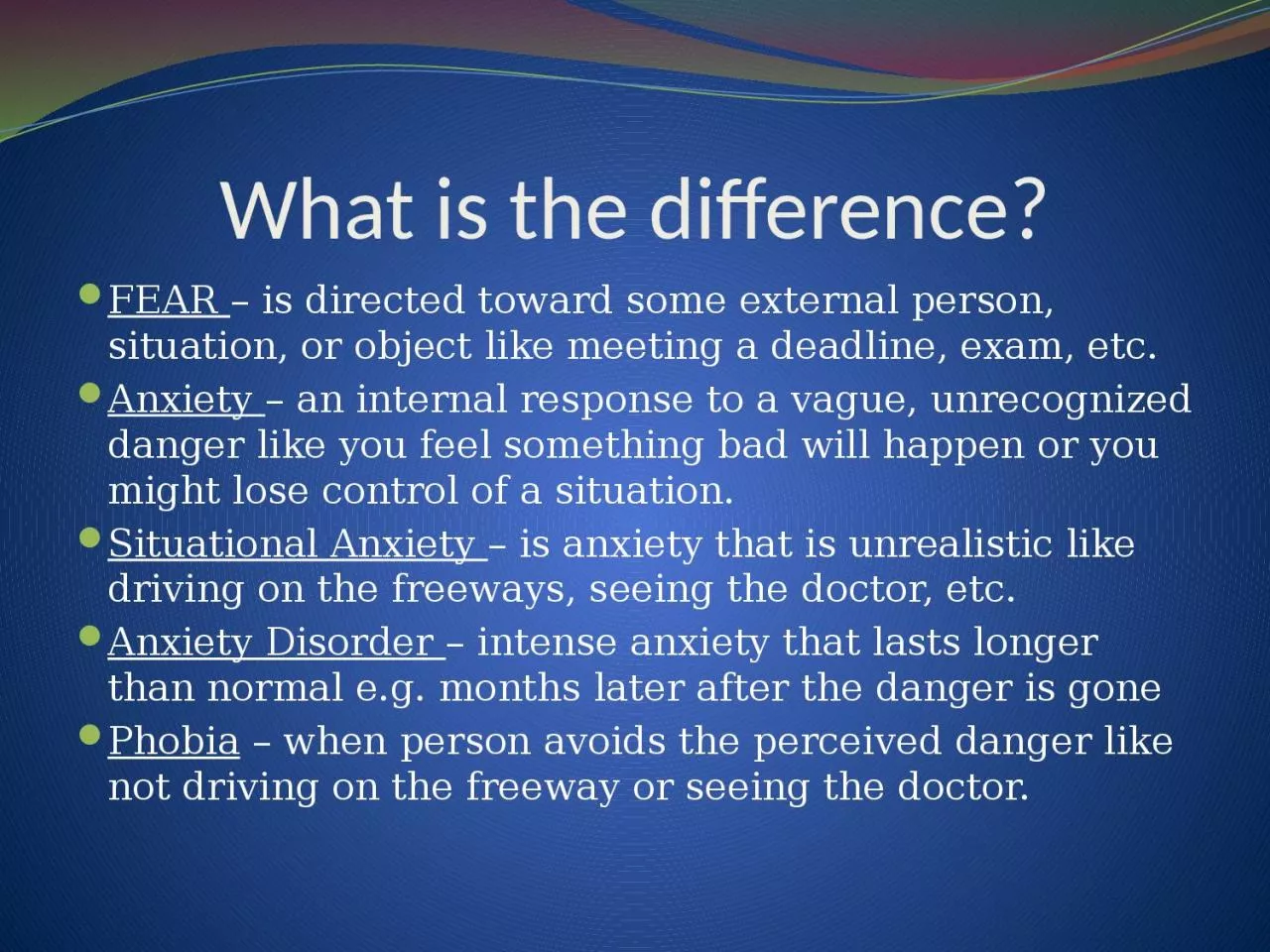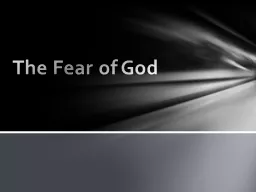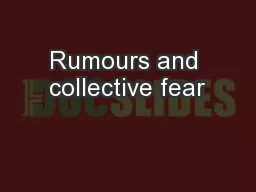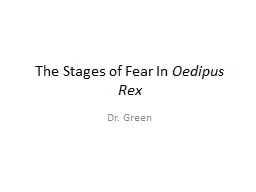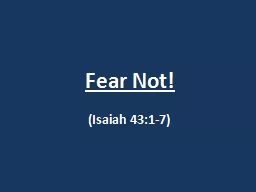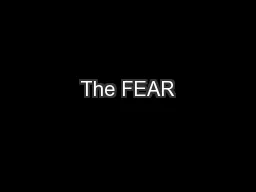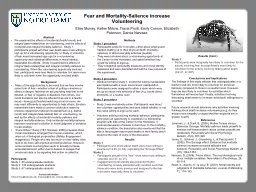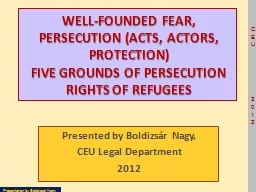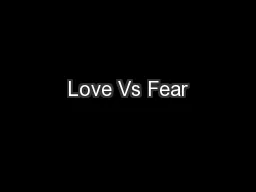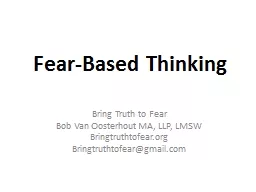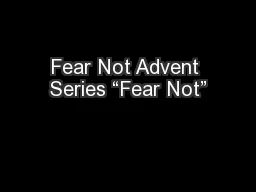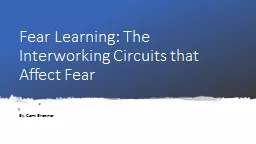PPT-What is the difference? FEAR
Author : ani | Published Date : 2024-02-09
is directed toward some external person situation or object like meeting a deadline exam etc Anxiety an internal response to a vague unrecognized danger like
Presentation Embed Code
Download Presentation
Download Presentation The PPT/PDF document "What is the difference? FEAR" is the property of its rightful owner. Permission is granted to download and print the materials on this website for personal, non-commercial use only, and to display it on your personal computer provided you do not modify the materials and that you retain all copyright notices contained in the materials. By downloading content from our website, you accept the terms of this agreement.
What is the difference? FEAR: Transcript
Download Rules Of Document
"What is the difference? FEAR"The content belongs to its owner. You may download and print it for personal use, without modification, and keep all copyright notices. By downloading, you agree to these terms.
Related Documents

